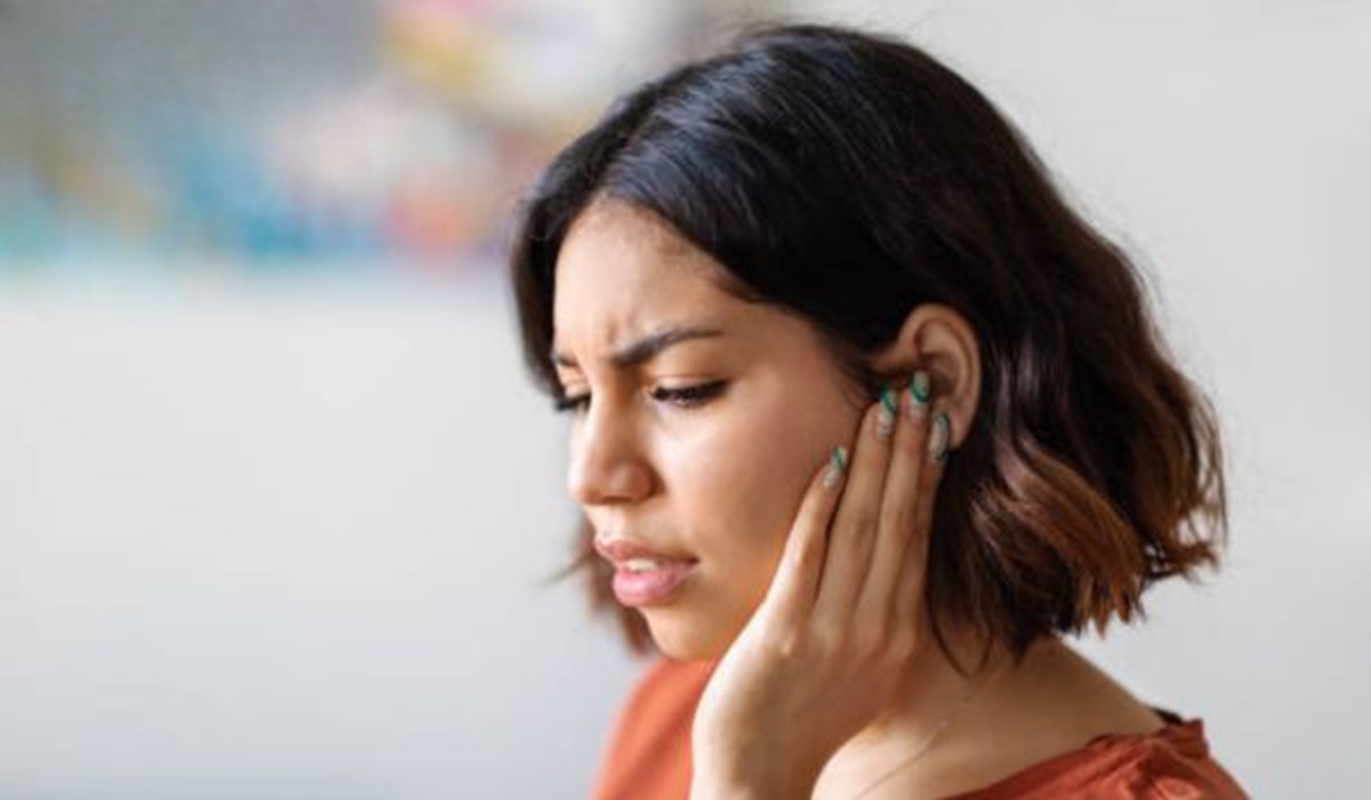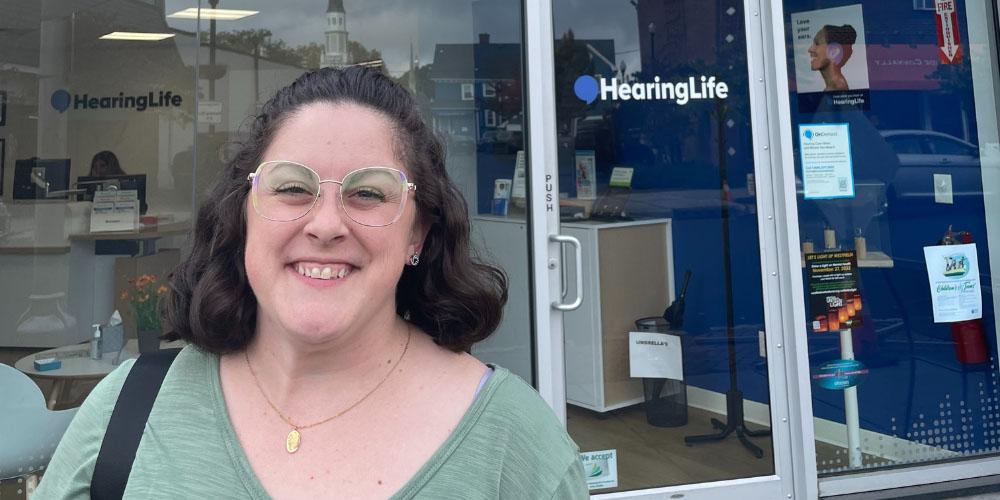
Spending time in or on the water—whether you’re swimming, kayaking, fishing or surfing—can provide endless relaxation, fun and exercise. However, as exciting as time in the water can be, it’s also important to be aware of how exposure to water, specifically very cold water and wind, can negatively affect your ear and hearing health. Read on to learn how a condition known as surfer’s ear can occur and how you can prevent it while still enjoying the activities you love.
Surfer’s ear exostosis, also known as external audio exostosis, is a slow-progressing condition where the bones of the ear canal develop bony growths called exostoses. While it is often asymptomatic, these ear canal bone growths can lead to a partial or complete ear canal obstruction if left untreated. As its name might suggest, the condition is primarily associated with surfers—but it can affect any person who is repeatedly exposed to cold water, including swimmers, divers, kayakers and sailors.
Exostoses are bone tumors that develop on top of existing bone tissue, similar to a bone spur. Think of them as bumps growing out of your bones. While that may sound concerning, exostoses are benign and won’t spread to other parts of the body. These bony growths can cause some pain, depending on the location in the body, or they may go undetected until discovered by a healthcare provider. While most exostoses develop without a known cause, the most common causes are bone injuries, health conditions like osteoarthritis or genetics.
In the context of exostosis and surfer’s ear, these bony growths form on the tympanic ring in the external auditory canal. This ring is connected to the temporal bone in the skull and is located within the middle ear, between the eardrum and the oval window. These bony growths in the ear canal often occur in both ears and can occur along the temporal bone.
While exostoses in general can be caused by several factors, surfer’s ear causes boil down to regular or prolonged exposure to cold water and wind. In fact, the development of exostoses is considered to be the body’s way of protecting the sensitive structures of the inner ear from cold water and wind.
While the exact process is still unknown, most doctors believe that the condition is caused by the body’s natural response to expand blood vessels and increase blood flow circulation when exposed to cold water or wind. Regular blood vessel expansion—known as vasodilation—can cause inflammation of the membranes of the tympanic bones, which can ossify into new bone growth. Put more simply, as the blood vessels expand in response to regular cold water exposure and come into contact with the surface of the ear’s bones, the inflammation caused by this irritation can solidify into new abnormal bony growths on the bones of the ear.
After simply hearing the name “surfer’s ear,” it can be easy to connect this condition to another similar condition related to ear health and water: swimmer’s ear. However, while these two ear conditions sound similar, they are actually very different. Here are the three key differences between surfer’s and swimmer’s ear.
- Causes: Unlike surfer’s ear, which is caused by chronic cold water and wind exposure, swimmer’s ear is caused by bacteria. Swimmer’s ear infections occur when water remains in the outer ear canal for extended periods of time, which creates a moist environment for bacteria to grow;
- Symptoms: Swimmer’s ear is often very easy to detect immediately—those experiencing the condition may experience itchiness inside the ear, feeling like the ear is blocked or full, drainage from the ear, fever, pain and decreased hearing. Surfer’s ear, on the other hand, can take years to develop and may come with no noticeable symptoms. More progressed cases of exostoses may come with decreased hearing, a sensation of fullness in the ears or ear infections;
- Treatment: Swimmer’s ear is more common and its treatment options are simple. Depending on the severity of the case, a doctor may recommend ear drops or oral antibiotics to reduce inflammation and get rid of any bacteria living in the ear. In the case of surfer’s ear, the only treatment method is surgical removal of the bony growths.
The severity of these complications is directly related to the size of the bone growths. These complications can progress with time, especially with continued exposure.
Conductive hearing loss, or a type of hearing loss caused by issues in the outer or middle ear, is a very common complication of surfer’s ear. As the blockages by the bone growths in the ear canal become more severe, sound cannot be conducted effectively through the middle ear and the ear drum. This causes the sounds that do reach the inner ear to become very diminished and more difficult to process as sound.
This progression of the bone growths can also lead to earwax buildup, which has a negative effect on hearing, as earwax and debris become trapped by the bone growths in the ear canal. It’s this buildup that can create the perfect conditions for bacteria growth in the ears, causing earaches, chronic ear infections, and water trapping in the ears.
In severe cases of surfer’s ear, the buildup of debris in the ears can put excessive pressure on the tympanic membrane. This thin layer of tissue, which separates the outer ear from the middle ear, plays a key role in processing soundwaves to the inner ear and protecting the sensitive inner structures of the ear from unwanted dirt and debris. Additional pressure on the tympanic membrane can cause the tissue to perforate or rupture, putting the person with surfer’s ear at greater risk of serious ear infections—especially with continued exposure to saltwater. If not addressed, this can cause permanent hearing loss.
Once your doctor can assess how surfer’s ear is affecting your hearing health, they will be able to recommend treatment options to properly address your symptoms. Unlike swimmer’s ear, which can be easily treated with antibiotics to fight bacteria growth in the ear, surfer’s ear treatment can be a little bit more involved. Once the bone growths themselves are formed, they can only be reversed with the help of surgical interventions. In severe cases of surfer’s ear, where the exostoses have significantly built up in the ear canal, your doctor will likely recommend a canalplasty. This surfer’s ear surgery, usually performed by an otolaryngologist, is performed to widen the ear canal. In the case of surfer’s ear, that can look like chiseling or shaving down the bone growths. While canalplasties are effective and can improve hearing health, this surgery is usually reserved for very severe cases of exostoses and for people who are experiencing significant complications as a result of their condition.
Because of the progressive nature of the condition, regular non-surgical medical management is also necessary, including proactively managing earwax buildup to keep ears as clean as possible to help prevent ear infections and hearing loss.
Overall, the best way to treat surfer’s ear is through early detection and by consistently taking preventative measures to protect your ear and hearing health.
In simplest terms, the best way to prevent surfer’s ear is to prevent or limit your ear’s exposure to cold water. This doesn’t mean stopping the activities you love—it just means protecting your ears from cold water entering. By consistently using ear protection during cold water exposure, you can prevent water from entering the ear canal and limit the development and progression of bone growths. Here are two specific surfer’s ear prevention tips:
- Wear a hood: If you’re surfing, swimming or otherwise exposed to incredibly cold water, you’re probably already wearing a wetsuit to keep your body warm during these activities. Most wetsuit manufacturers offer neoprene hoods that can be worn separately or attached to the wetsuit, and fit snugly over the ears and head. However, wetsuit hoods are still permeable: they can limit the amount of water and the speed at which the water can enter the ear, but they don’t stop it completely from entering;
- Wear earplugs. In addition to neoprene hoods, it’s recommended to also wear earplugs when exposed to cold water. Earplugs are considered to be the most effective at preventing water from entering the ear canal as they create a seal. Look for earplugs designed for sports and activity to ensure that your earplugs will stay in place during all water activities.
Once you’re out of the water, it’s important to effectively dry your ears to prevent bacteria forming in water in the ear canal. After swimming or surfing, tip your head to the side to help water drain from the ear canal. Using a soft, dry towel, gently wipe the outer ear dry. Be sure to fully dry the ears after any time in the water.
Understanding surfer's ear is essential for anyone exposed to cold water conditions. Early detection and prevention are key in managing this condition, which can lead to hearing difficulties due to bony growths in the ear canal. By taking proactive measures, such as wearing ear protection, you can significantly reduce your risk. If you have concerns about surfer's ear or want to learn effective strategies to protect your hearing, schedule an appointment with a hearing care specialist at your local Miracle-Ear. They’ll offer personalized advice and ensure your ears are safeguarded from cold water exposure.
The above is the interpretation of Understanding and Treating Surfer's Ear (Bony Growths) provided by Chinese hearing aid supplier Shenrui Medical. Link https://www.srmcm.com/Blog/Understanding_and_Treating_Surfer_s_Ear_Bony_Growths.html of this article is welcome to share and forward. For more hearing aid related information, please visit Blog or take a look at our Hearing aids products















